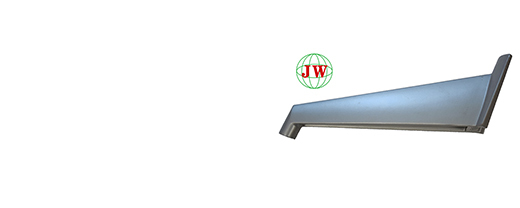
Do you know the characteristics of the materials used for die-casting our communication components?
2024-12-28 15:00
In the world of modern technology, die-casting plays a pivotal role in manufacturing, especially when it comes to our communication components. The materials chosen for this process possess unique characteristics that are essential for optimal performance.
To begin with, one of the primary materials used is aluminum alloy. It is favored for several reasons. Firstly, aluminum has excellent thermal conductivity. In communication components, where heat dissipation is crucial to prevent overheating and ensure stable operation, the high thermal conductivity of aluminum alloy allows heat to be efficiently transferred away from sensitive electronic parts. This helps prolong the lifespan of the components and maintain their functionality even under heavy usage.
Secondly, aluminum alloy offers a remarkable strength-to-weight ratio. Communication devices need to be lightweight for easy portability, yet sturdy enough to withstand the rigors of daily use and potential impacts. The use of aluminum alloy in die-casting our communication components strikes the perfect balance, enabling the production of slim and durable parts that can meet the demands of the fast-paced communication industry.
Another important characteristic is its good corrosion resistance. Communication components are often exposed to various environmental conditions, including humidity and temperature fluctuations. Aluminum alloy forms a protective oxide layer on its surface, which safeguards the underlying metal from corrosion. This property ensures that the components remain reliable and aesthetically pleasing over time, without succumbing to rust or degradation.
Zinc alloys are also sometimes utilized. They have outstanding fluidity when molten, which is a significant advantage during die-casting. This allows for the creation of highly detailed and complex shapes with precision. In communication components, where intricate designs may be required to house delicate circuitry or connectors, the fluidity of zinc alloys can be exploited to achieve the desired form factor.
Moreover, zinc alloys generally have a relatively low melting point compared to some other metals. This means that less energy is required to melt them during the die-casting process, leading to cost savings in production. It also reduces the wear and tear on the die-casting molds, prolonging their service life and further optimizing the manufacturing process.
In conclusion, understanding the characteristics of the materials used for die-casting our communication components is vital. Whether it's the thermal conductivity, strength-to-weight ratio, corrosion resistance of aluminum alloy, or the fluidity and low melting point of zinc alloys, each property contributes to the overall quality, functionality, and cost-effectiveness of the final communication products. By carefully selecting and leveraging these materials, we can continue to produce high-quality communication components that power our connected world.
Get the latest price? We'll respond as soon as possible(within 12 hours)












